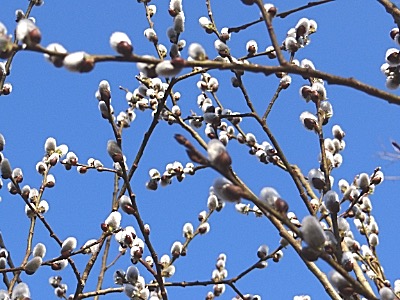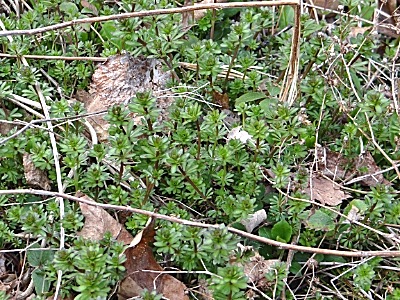- By Suzana Jelovecki
- Around Town
 Print
Print  Almost two decades ago I was a newcomer on the North American continent. I used to take a walks along the East River's banks on the edge of the Long Island City. City river banks are not pleasant to the eye, nor particularly stimulating to any other senses. They are bare evidence of the most brutal abuse of Nature: lifeless murky waters around aged docks, rusted industrial waste all over, big chunks of rocks pasted with polluted slimy algae overgrowth and grayish graveled paths to walk on.
Almost two decades ago I was a newcomer on the North American continent. I used to take a walks along the East River's banks on the edge of the Long Island City. City river banks are not pleasant to the eye, nor particularly stimulating to any other senses. They are bare evidence of the most brutal abuse of Nature: lifeless murky waters around aged docks, rusted industrial waste all over, big chunks of rocks pasted with polluted slimy algae overgrowth and grayish graveled paths to walk on.The scenery mirrored the shiny concrete jungle across the East River. Yet tiny shrubs of pussy willows branched side by side with the heavy oxidized construction consoles creating a surreal contrast of robust rust and gentlest silky blossom. Cheerful yellow flower heads of dandelions perked proudly from gravel along the path and young cleavers shoots mingled with spare patches of grass.
Oh, how happy I was to find my well known companions from the homeland brushed with the April breeze on my very first spring walk in the new land! I'll never forget the 'feeling' vision of the roots spreading beyond the physical outreach of the plants, traveling across the Atlantic Ocean, spreading over Europe and Asia, circling the whole north hemisphere. Wise neuron-like bundles of connections soothed my immigrant blues.
I stood alone at the very edge of the Long Island, humbled by the presence of the familiar plants in a City is a prime example of separation of humanity and Nature. They sprouted up, cracking the concrete with wild disobedience and untamed vigor to make me see that we are more connected then we think, and that the separation we create in our human ways hurts us more, because 'we' abuse Nature the most.
Interestingly enough, my three plant fellows are native beauties on all three continents of the North Hemisphere sharing the linking wisdom for many, many centuries with ones they were open enough to feel and embrace their presence as shamans, herbalist, botanists, artists, explorers or simply careful observers of hidden and forgotten languages of the Nature.

Pussy willow (genus Salix) is perhaps very first sign that the spring has begun since their catkins oftentimes bud in wintery conditions, announcing gently with their silky hair and pussy fur the awakening of the new life cycle. Their branches are used for decorative purposes for celebration of the Chinese New Year (Lunar New Year), where fluffy white blossoms resemble silk and soon to emerge young shoots represent jade, both signs of growth and prosperity.
Catkins buds are also used in Chinese herbal formulas to treat signs and symptoms associated with seasonal allergies. In many Christian traditions throughout Europe pussy willow branches were carried on Palm Sunday instead of palm branches unavailable further north. The willow tree was used both in Native American and European folk medicine as powerful and versatile medicinal plant and some parts of it are continuously researched and used as component of pain medicine in modern pharmacology. Willow trees show tremendous resilience and can be very old. In fact, it is not uncommon to witness willow branches emerging from withered, lifeless trunks and stumps showing us the power of the life force and the wisdom of an old age. I find its silky blossom one of the most sensual 'flowers', which reminds me to be gentle and considerate when sharing loving touch.

Cleavers (Lat. Gallium aparine) is the herb which grows practically everywhere, on the road banks, in the woods, waste places, open fields. Cleavers were both medicinal and edible in various indigenous traditions spread over many continents. The most common medicinal usage of cleavers is to cleanse lymphatic system, clear skin and reduce glandular swellings.
In some Native American Tribes cleavers were used to treat STDs, and snake and insect bites. Cleavers seed is one of the best coffee substitutes. It merely needs to be dried and lightly roasted and has much the same flavor as coffee. This plant blossoms in early summer. Whitish flowers are very tiny and clustered developing sweet pleasant fragrance on a warm sunny day if you gently brush them with the touch of the hands. Even Shakespeare pondered about seductive aroma of the flowers in his play Midsummer Night Dream and some traditional lore considered cleavers as a love medicine to be used as infusion in the bath for the women wishing successful love affairs.
A thick matt of the stems, when used as a sieve for filtering milk, was said to give healing properties to the milk and is still used in Sweden for that purpose. Although not very palatable it can be added to soups and spring wild edible dishes because of its cleansing properties. I love to gather young shoots, dry them to make infusion or use them fresh for herbal tinctures.
Dandelion (Lat. Taraxacum officinale) flower is one of my most cheerful wild plants. They make me laugh and shine without reason. They transform from dense cluster of tiny florets into downy angelic like balls blown by the breath or the wind as endless possibility of creation. Beautiful radiating yellow color brings warmth to cooling green of the fresh grown grass. They are natural connectors, symbolizing communities, spreading in colonies throughout meadows, on the road banks, cracking the gravels and stones with the bold presence and ancient resilience.
Some of us call them noxious weeds. I prefer to call them beauties of natural creation, who enrich the soil with nitrogen, provide our bodies and souls with nutrient hardly accessible from many cultivated culinary and edible plants. They are a common green edible prepared in salads, steamed or stir fried in European and Asian cuisines.
As medicinal herb all dandelion parts were extensively used over the centuries -- or better to say millenniums all over the world. The most popular use of the plant in modern herbalism is for diuretic (leaves) and hepatic (roots) medicine. In Chinese herbal medicine it is added to many formulas to clear inflammation and help with skin rashes. In folklore medicine rubbery milky sap from stalks was used to treat warts.
Dandelion blossoms are important nectar for bees and first spring butterflies. Common English name dandelion derives from French name for the plant: Lion's tooth. I would add that dandelions are not just lion's teeth, but fully present meadow lions who shine together with the optimism of newly awakened plant kingdom.
v11i17
Suzana Jelovecki, MS, Licensed Acupuncturist, is the owner of Roots and Branches Acupuncture and Nature Bound Woman
The information in this article is provided for informational purposes only and is not intended to substitute for in-person consultation with and advice from a health care professional. The dietary, nutritional, lifestyle and other information on this website are not intended to be and do not constitute health care or medical advice.
The information in this article is provided for informational purposes only and is not intended to substitute for in-person consultation with and advice from a health care professional. The dietary, nutritional, lifestyle and other information on this website are not intended to be and do not constitute health care or medical advice.



